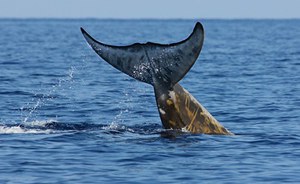Testing indicators for trend assessment of range and habitat of low-density cetacean species in the Mediterranean Sea
As part of the FLT Med Net and Life CONCEPTU MARIS Action A2 projects (NAT/IT/001371), coordinated by ISPRA, an article entitled: Testing indicators for trend assessment of range and habitat of low-density cetacean species in the Mediterranean Sea
Information on the habitats preferred by cetacean species present in the Mediterranean Sea and the identification of potential changes in their distribution are essential to identify the measures necessary for their conservation.
The legislative framework suggests some indicators to be used to evaluate the conservation status of species. However, threshold values have not yet been developed to assess whether the species' distribution range or habitat is adequate.
Through literature review, a recent study identified four potential indicators to evaluate the short-term trend of the distribution area and habitat of three rare cetacean species from the Mediterranean Sea (Grampus griseus, Globicephala melas and Ziphius cavirostris): Observed Distributional Range - ODR, Ecological Potential Range - EPR and the variation in the extent and location of the ranges and in the proportion between observed and potential range.
The dataset of the Fixed Line Transect Mediterranean monitoring Network (FLT Med Net) monitoring program was divided into two periods (2008-2012; 2023-2019), corresponding to the third and fourth evaluation cycles required by the Habitats Directive, using the first as reference for comparison with the subsequent period. Trends were then assessed as the change between two six-year periods.
For the three species, some changes in their range have been highlighted. The study reports the results of the areas identified as important for the species and their changes over time and a series of recommendations for the application of the indicators proposed for the study and evaluation of the conservation status of highly mobile species such as cetaceans. More details are provided below in the article.

